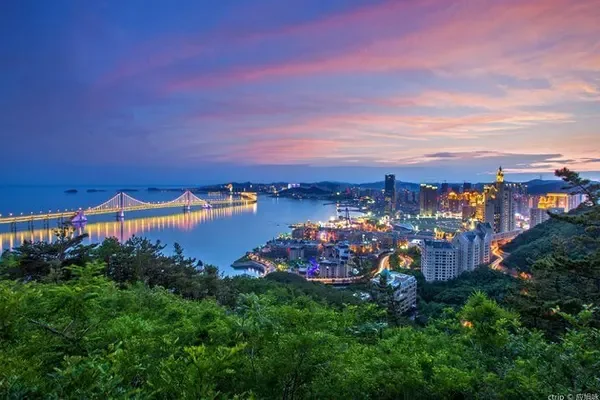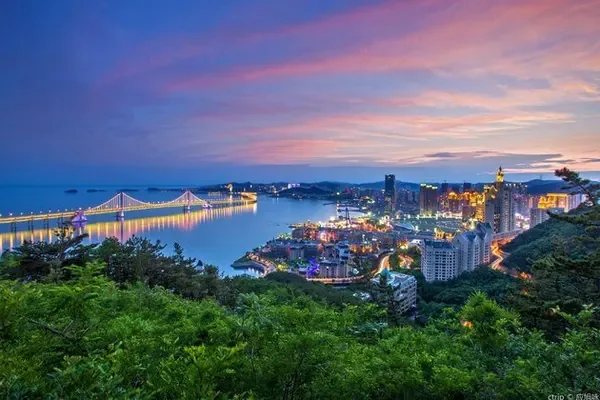When it comes to Xixia, everyone thinks it is quite strange. After all, there is no official history of the 24th century, and there is no one called Xixia history. I only remember that this mysterious dynasty is mentioned in the small print of the junior high school history textbook. In my memory, Xixia was weak in national power but strong and martial. Song Liao and other great powers at the same time failed to take advantage of the conflict with Xixia. Afghanistan, or the popular African flat-headed animal. The capital of Xixia was called Xingqing Mansion, which is now Yinchuan, the capital of Ningxia Hui Autonomous Region. I came to Yinchuan for the first time a while ago. I was on a business trip, but it was rare to arrange a day of leisure time to slowly trace the Xixia imprint of this modern city.
First dry goods:
(1) Xixia Mausoleum Scenic Area
The Xixia Mausoleum Scenic Area is quite close to the urban area. It is recommended to take a taxi directly. Of course, there is a tourist bus in Yinchuan that can go there, but the number of buses is too small (twice a day), and there are several stops, so it is uncomfortable to stop and go.
The Xixia Mausoleum is naturally the tombs of the Xixia royal family. It has been built since the beginning of the 11th century. It is located on the Helan Mountain in the west and the Yinchuan Plain in the east. According to the tour guide, there have been countless flash floods in Helan Mountain in the past thousand years, but the core area of the Xixia Mausoleum is intact. I have to sigh at the designer's site selection and construction level. At the entrance of the scenic spot are four Xixia characters, "Dabai Gaoguo", which is also the self-proclaimed name of the Xixia Dynasty. Xixia respected white as beauty, and the emperor wore a white dragon robe, which was very different from the Central Plains Dynasty.
After entering the scenic spot, take a battery car to the Xixia Museum, which mainly contains some historical relics of Xixia. Xixia originated from the Qinghai-Tibet Plateau, and was allowed to move to northern Shaanxi during the reign of Emperor Taizong of the Tang Dynasty, and gradually moved closer to farming civilization from nomadism. When Xixia was strong, its territory was vast, with an area 13 times that of the current Ningxia Autonomous Region. Northern Shaanxi and eastern Gansu were its territory. The most important thing was that Xixia controlled the Hexi Corridor, which monopolized the trade on the Silk Road, and Hetao The area is an important place for war horses, no wonder Xixia cavalry is so powerful. There are two pictures below. The first picture seems familiar at first glance. After thinking about it for a long time, I remembered that it was a picture in a junior high school history textbook. This time I saw the source. The second picture is a national first-class cultural relic, a gilded bronze bull. This not only shows that the craftsmanship was developed during the Xixia period, but also is strong evidence of the emphasis on farming at that time.
Here is another restoration map of the No. 3 Mausoleum of the Xixia Kings. Mausoleum No. 3 is the mausoleum of the famous Li Yuanhao. Looking at this model is really majestic, but now there are only bare "mounds" left, and I can't help but feel the vicissitudes of life.
The next step is to go to the Xixia History Museum, which restores several historical fragments of Xixia from its origin to its demise with wax figures, which are vivid. What impressed me deeply was the battle of Haoshuichuan between Xixia and Song Dynasty. Xixia used pigeons to make the GPS positioning of Niucha at that time, which was really a masterpiece in the history of war. Those who are interested can Baidu by themselves.
Going forward is an inner street that sells various specialties and tourist products. I don’t have much interest. I just walk through it to the last stop, which is Mausoleum No. 3, where Li Yuanhao is buried. Li Yuanhao is also considered a generation of heroes. He fought south and north, opened up territories, created characters, and formulated legal codes. He fully possessed all the qualities of a founding king. Unfortunately, he has always been an enemy of the Central Dynasty. Excessive worship.
After visiting the No. 3 Mausoleum, take the battery car directly to the exit of the scenic spot, and eat some cold-skinned pork buns nearby to fill your stomach. After all, dinner is already planned. Then find a black car at the door, bargain for 20 yuan and sit in the scenic spot of Xixia Fengqing Garden. In fact, the distance between the two scenic spots is very close, but there is no way for a black car.
(2) Xixia Customs Park Scenic Area
If the Xixia Mausoleum Scenic Area is a static heritage park, then the Xixia Customs Park is a dynamic display of Xixia folk customs. The entrance of the scenic spot is high-end and elegant, and it looks like the watchtowers of the Qiang people. The main ethnic group of the Xixia Dynasty, the Dangxiang clan, was originally a branch of the Qiang nationality, and their knowledge has increased.
The first thing you pass is a market street, where the antique market style blows your face. Each small house has a theme, Xixia bank, divination, gambling shop, shadow puppets, etc., each with its own characteristics. With the ticket, you can exchange five Xixia for free at the bank. Taobi, you don’t need to spend money to experience the casino and other projects, it’s really good. Those who hold pottery coins can also look behind the shadow puppet screen, which is very fresh. There was an arena acrobatics performance on Shijing Street at around 3:00 p.m., which was much better than expected. The young men were very dedicated and hardworking, especially the throwing axe at the end. Some daring tourists dared to go up and participate in the interaction. It was really thrilling to watch.
After watching the performance, we went to visit the pottery museum. A master named Li Wukui was invited to sit here. The products he made were really beautiful and won many domestic awards, including a Shanhua Award. I bought four pottery whistles by myself, 80 yuan each. They are also award-winning products in the tourism product competition. Here you can also experience pottery by yourself. Children may like it more, but I don’t mind it... Candidly took a picture of a beautiful woman, I was too nervous to take a picture of her face, embarrassing.
At 16:30 in the afternoon is the most exciting real-scene horse battle performance in the scenic spot "Beacon of Western Xia". Hit Hitler's tactics? Unexpectedly, there was an application in China so many years ago. If you are interested, search for it yourself. In short, give this performance 10,000 likes! The actors are well-trained, and even the horses are very intelligent. At the end of the film, they pretended to be dead and received a lot of applause. Unfortunately, they didn't have time to shoot. Everyone must come and see this show, it's worth it.
The performance lasted for half an hour, and I stopped by the Michao Winery after I came out of the horse battlefield. The name of this winery has cultural connotations. Miqin is the name of a tribe in the Xixia period. This tribe was famous for its superb winemaking skills at that time. Ningxia is at the same latitude as Bordeaux in France, with plenty of sunlight, drought and little rain, and large temperature difference between day and night. The grapes produced are of high quality and suitable for winemaking (listen to the introduction from the little girl at the front desk, learn and use now O(∩_∩)O). I tasted the oak barrel dry red here, and it tasted really good. I checked on Baidu that it was a product that won the Silver Award of Decanter. I bought a case decisively at the price of 158 yuan, and I can send it home directly, which is very convenient. It took another nine hundred and more oceans, chopping and chopping...
It’s six o’clock when you get out of Xixia Fengqing Garden, so you don’t need to take a black car here, you can use Didi, or this scenic spot belongs to the urban area, and the bus at the gate runs every ten minutes is also very convenient. I have already decided to go to the famous Guoqiang Handcuffs, so I took a taxi there, and it was only 15 yuan. Ningxia's mutton is so delicious that it makes me cry. It's perfect with a cup of eight-treasure tea, special noodles and cold dishes!
Emperor Taizong of Tang said that history can be seen as a mirror; Lenin said that forgetting history means betrayal; there is a famous saying on Wall Street that there is nothing new under the sun. Although Xixia did not leave a rich and colorful chapter like the Tang, Song, Yuan, Ming and Qing Dynasties, the gold and iron horses at that time still have great warning and educational significance for us today.


